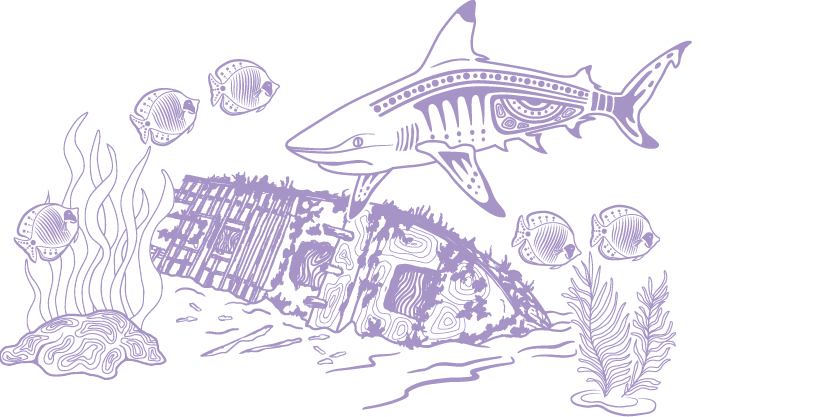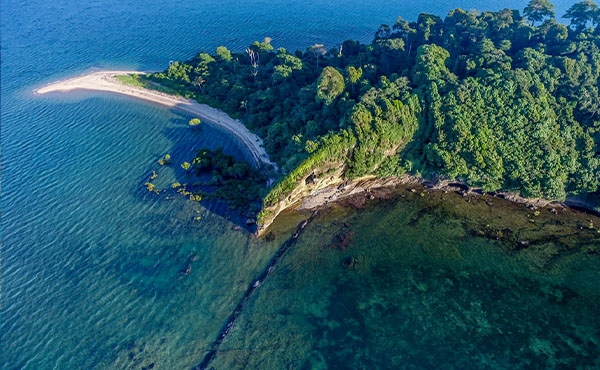Great Barrier Reef’s heritage values are assessed against several criteria: natural (world heritage and national heritage), Indigenous, historic (Commonwealth and other), and other heritage (social, aesthetic, and scientific) values.
The World Heritage Area remains whole and intact, but its integrity is being challenged
The Great Barrier Reef remains whole and intact and maintains many of the elements that make up its outstanding universal value, as recognised in its World Heritage listing. Since it was inscribed as a World Heritage Area in 1981, significant components that underpin the four natural world heritage criteria have deteriorated. The size of the World Heritage Area is becoming a less effective buffer against the global impacts of human-induced climate change, which continues to challenge its integrity. Without additional national and global action to tackle the greatest threats to the Reef through this critical decade and beyond,182,1100 the protective capacity of size will continue to be eroded by persistent and broadscale impacts on the Region and adjacent areas. The effectiveness of local and regional scale management actions is ultimately impacted by the success of actions to address external influencing factors, for example climate change.
Threats to nature are threats to Indigenous heritage values
Indigenous heritage includes tangible and intangible heritage and is inseparable from the condition of the Reef’s natural components. Many threats, such as those from climate change, affect Indigenous heritage values through their impact on natural heritage values. Loss of Indigenous knowledge, including oral traditions held by Elders, is an ongoing threat; however, the living heritage of First Nations peoples across the Region remains resilient.
The COVID-19 pandemic created challenges for intergenerational knowledge transfer, despite community-led responses resulting in positive direct health outcomes. Collaborative management of Land and Sea Country, and efforts to map and document sites of cultural importance are advancing in some areas, but understanding and recognition of these important areas in management frameworks remains inadequate. As recognition of the wealth of undocumented Indigenous heritage has increased, it has underlined the limited knowledge in this area. Overall, an inferred condition of the Region’s Indigenous heritage value has resulted in a continued grade of poor.
COVID-19 affected generational knowledge transfer
The historic heritage values of the five properties listed on the Commonwealth Heritage List that are in the Region are graded as good, having been identified and included in a relevant inventory. Components of historic heritage encompassing other lightstations, shipwrecks, aircraft wrecks and other places of historical significance remain in poor condition. The condition and trend assessments for most places and artefacts are based on limited published evidence. Positive progress has been made since 2019 towards gathering information on shipwreck and aircraft wrecks including the possible identification in 2021 of a previously unknown shipwreck as the remains of the Aert van Nes which wrecked on the Great Barrier Reef in 1854.
Published condition information is limited for many places of historical significance
Other heritage values, including social, aesthetic and scientific, are considered in good condition overall. The significance of the World Heritage Area still transcends national boundaries and remains a source of pride for the Australian public. Notable progress has been made since 2019 in understanding the human dimensions of the Reef, particularly around societal attitudes and how people value and benefit from it. The public value the importance of the Reef and continue to see it as part of their personal and national identity. Perception of the Reef’s aesthetic beauty remains high, despite some declines in the condition of habitats and species.
Actions to support the Reef’s health contribute to human wellbeing
People have expressed willingness to undertake actions for Reef health, which in turn, supports human wellbeing. While increased awareness of the threats to the Reef is evident, there is also a general lack of specific knowledge about how to help address and mitigate these threats on a personal level. The Region’s scientific heritage value continues to grow. Ongoing efforts are dedicated to preserving the legacy of pioneering science in the Region to ensure its enduring impact on future generations.


